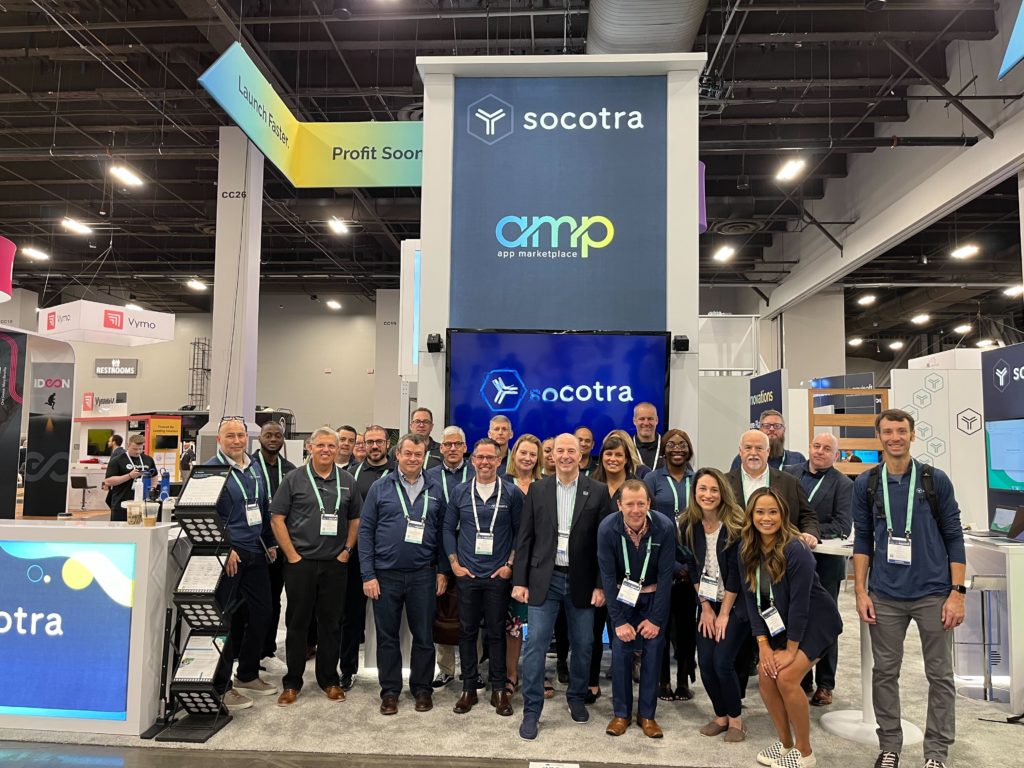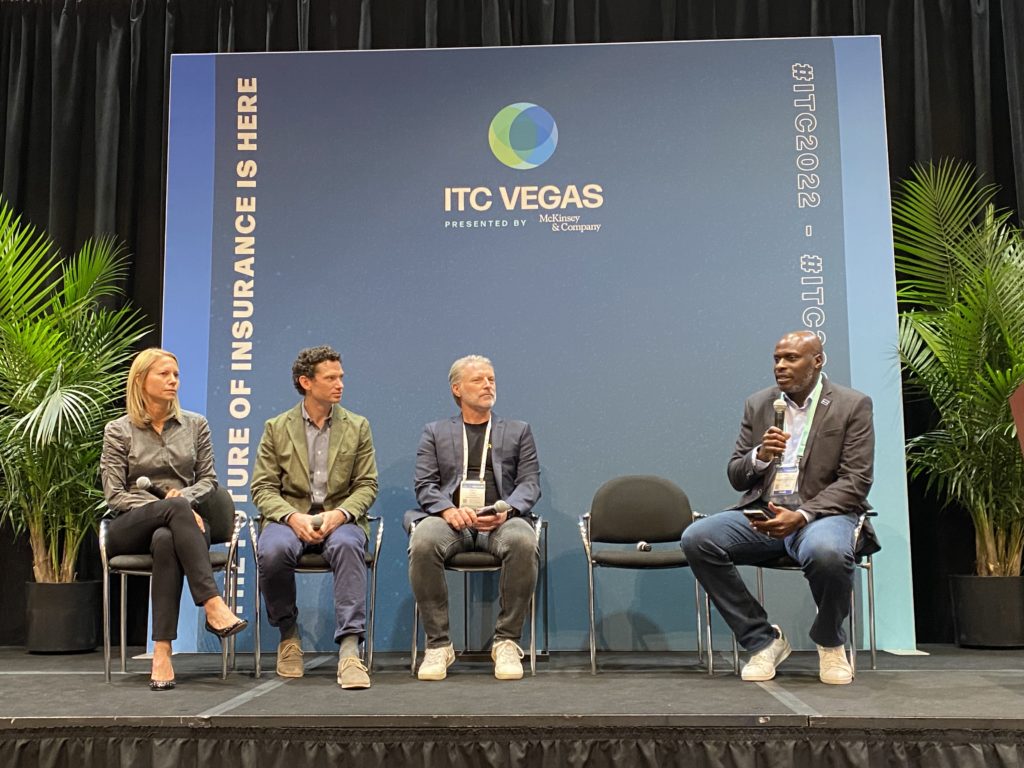Collaboration Through Interconnected Ecosystems at ITC 2022
Socotra leaders share key insights, including how partnerships in a connected ecosystem are the next wave in insurance.
ITC2022 is in our rearview mirror, but the insights gathered remain in focus. In this recap, Socotra CMO, George Ravich, and Director of Product Marketing, Kim Tambo, reflect on their key takeaways and learnings.
Interconnected Ecosystems Drive Innovation Forward
Partnerships and collaborations were key themes that emerged from the discussions at ITC2022. The new insurance ecosystem means not relying on just one technology vendor anymore, as no single solution provider can solve every problem for every carrier. “To get the best services or software, you can’t go to one vendor alone – you have to go to multiple,” Ravich said. “Could you imagine getting all your iPhone apps only from Apple? The future is selecting vendors you want and connecting them for a best-in-class product where you can easily switch out components that are inferior.”
Tambo highlighted the importance of providing customers with a choice. Carriers need to be flexible and give options to their customers, and vendors should reflect this flexibility back to their carrier partners. She described how the Socotra App Marketplace apps provides this ability. “With the marketplace, carriers can turn apps on and off easily to test what works best. They have the ability to make immediate changes and test them without taking years to roll out changes.” Giving carriers this control in-house means no expensive IT projects or delays, allowing them to adapt to changing customer demands immediately.
Collaborators, Not Competitors
Building on the idea of strong partnerships between legacy carriers and insurtechs, Ravich spoke about the shift he noticed this year at ITC toward collaboration. “There was lots of talk about carriers’ willingness to work together and partner. More than ever, there is acknowledgment from established carriers that they need the innovation insurtechs bring. Insurtechs and carriers are not competitors, but rather collaborators.” This sentiment was echoed by many others throughout ITC2022, with c-suite leaders and founders expanding on the value of smart partnerships. A collaborative ecosystem where insurtechs and incumbents work together to grow and innovate is the industry’s next evolution — or revolution.
The sheer size and magnitude of ITC2022 reflected this new willingness to work together. Nine thousand people attended the event, representing every part of the insurance industry. Walking the exhibition floor required patience, sneakers, and a map to find specific vendors among the booths. And it is precisely this size and scope that demonstrates the industry’s excitement for the new solutions insurtechs can provide. Ravich spoke about the energy of the show floor and its impact on attendees. “The magnitude of companies offering every kind of service shows the great demand for this innovation. That message came through loud and clear.”
Tambo described the openness of legacy carriers to try new solutions, a shift from a traditional, risk-averse mindset. “The horizon is bright. Carriers are open to consuming different solutions and plugging them in. Leveraging new ideas is huge. It’s amazing how far we’ve come so quickly.”
Carriers Need Enabling Technologies
Another shift in the marketplace this year was the realization from carriers that they need enabling technology to compete with other incumbents. “Enabling technology has become accepted and a real part of what carriers and MGAs were looking for at ITC. Until recently, there were big core platforms and vendors, and things were status quo,” Ravich explained.
Insurtechs have changed the landscape over the past few years, and the industry has learned it needs to work differently to succeed. “This year, people are realizing they need enabling technology to compete,” Ravich said. “Large carriers need agile platforms to develop new products quickly to meet customer needs.”
One way these new technologies are changing the face of insurance is through risk reduction. Insurtech innovators are fiercely competing to deliver the most agile tools as the industry shifts from a “react and repair” model to a “predict and prevent” one, where carriers utilize technology to help policyholders avoid or reduce their risk exposure. Tambo elaborated on the benefits of carriers having the right technology for the right exposures, saying, “Technology can improve the customer experience and pricing, but it also improves accuracy. Mistakes cost money, and using an automated workflow reduces human error like those made in data entry, for example. Insurers can provide services or education to insureds to prevent claims — shifting to a predict and prevent model.”
Collaboration Through Interconnected Ecosystems
As the insurtech industry continues to innovate and bring more affordable products to market in a fraction of the time, legacy insurers and MGAs are learning that working together to solve challenging problems benefits all. With cloud-native core platforms and app marketplaces, the right coverage can be made more easily accessible to a larger and more diverse community. As 2023 comes into focus, the insurtech industry will continue to better service communities and businesses alike, with niche products and services that are easily accessible.
The Socotra App MarketPlace combines the best insurtech providers through a simple API so carriers can engage with the best solution providers through one direct connection instantly. Contact us for your free demo today to learn how the Socotra App MarketPlace helps you collaborate.




